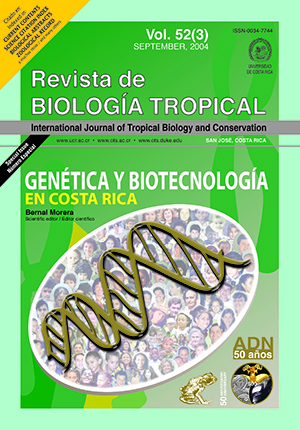Abstract
We have previously identified a crude extract of the plant Chamaecrista nictitans (Fabaceae) with antiviral activity against herpes simplex virus. The main objectives of this research were to identify the step of the replication cycle of herpes simplex inhibited by the extract, and to attempt to characterize the chemical characteristics of this extract. The crude extract from Chamaecrista nictitans (Fabaceae) was extracted with a mixture of diclorometane/methanol, and further fractionated following a bioassay-guided protocol using a combination of preparative thin layer and column chromatography. Toxicity and bioassay experiments were carried out in monolayers of Vero cells. The antiviral activity of the extract was assessed by total inhibition of cytopathic effect after three-day incubation. The highest concentration of the extract which was not toxic to the cells was 200 μg/ml. Western blot and immunofluorescence techniques were used to elucidate the antiviral mechanism of the extract by infecting Vero cells with the virus at different times and monitoring the synthesis of viral proteins. A 60 kDa protein was detected at 2 hr and 8 hr post-infection but no additional proteins were synthesized at later time intervals, and cytopathic effect was not observed after 24 hr. This result indicates that the extract acts at the intracellular level in order to inhibit late transcription. However, it does not inhibit transcription/translation of early viral proteins. These results were confirmed by immunofluorescence experiments. A strong fluorescent signal was observed in control cell monolayers at 24 hr post infection, accompanied with a clear cytopathic effect. In contrast, in the presence of acyclovir or the extract, cells showed very discrete immunofluorescence, characterized by a punctuated pattern, and no cytopathic effect was observed. Neutralization assays were performed using pre-incubation of virus with either specific herpes simplex-1 antiserum, 200 μg/ml of the extract or 20 μg /ml of acyclovir. After 1 hr incubation, cells were infected and monitored for cytopathic effect. Only the virus treated with acyclovir showed viral activity, while no cytopathic effect was induced by samples of virus incubated with the extract. It is concluded that the extract inhibits both the attachment of the virus to the cell and the secondary transcription of the virus within the cells. Chemical characterization of the extract showed the presence of tannins.References
Bean, B. 1992. Antiviral Therapy: Current Concepts and Practices. Clin. Microbiol. Rev. 5: 146-182.
Crumpacker, C.S., LE. Schnipper, S.I. Marlowe, P.N. Kowalsky, B.J. Hershey & M.J. Levin. 1982. Resistance to antiviral drugs of herpes simplex virus isolated from a patient treated with acyclovir. N. Engl. J. Med. 306: 343-346.
Crumpacker, C. 2001. Antiviral Therapy, pp. 393-434. In D.M. Knipe & P.M. Howley (eds.). Fields Virology. Lippincott Williams & Wilkings. Philadelphia, Baltimore, New York.
De Bruyne, T., L. Pieters, M. Witvrouw, E. De Clercq, D. Vanden Berghe & A.J. Vlietinck. 1999. Biological Evaluation of Proanthocyanidin Dimers and Related Polyphenols. J. Nat. Prod. 62: 954-958.
Haslam, E. 1996. Natural Polyphenols (Vegetable Tannins) as Drugs: Possible Modes of Action. J. Nat. Prod. 59: 205-215.
Hovi, T. 1988. Successful selective inhibitors of viruses, pp. 1-21. In H.J. Field (ed.). Antiviral Agents: the development and assessment of antiviral chemotherapy. CRC, Boca Raton, Florida.
Laemmli, U.K. 1970. Cleavage of structural proteins during the assembly of the head of the bacteriophage T4. Nature 227: 680-685.
Obando, V. 2002. Biodiversidad en Costa Rica: estado del conocimiento y gestión. INBio, Heredia. p. 81.
Schaeffer, M.J., L. Beauchamp, P. de Miranda, G.B. Ellion, D.J. Bauer & P. Collins. 1978 . 9-(hydroxyethoxymethyl)guanine activity against viruses of the herpes group. Nature 272: 583-585.
Sun, B., C. Leandro, J.M. Ricardo da Silvia & I. Spranger. 1998. Separation of grape and wine proanthocyanidines according to their degree of polymerization. J. Agric. Food. Chem. 46: 1390-1396.
Whitley, R.J. & J. Gnann. 1992. Acyclovir. A decade later. N. Engl. J. Med. 327: 782-789.
Comments

This work is licensed under a Creative Commons Attribution 4.0 International License.
Copyright (c) 2004 Revista de Biología Tropical


